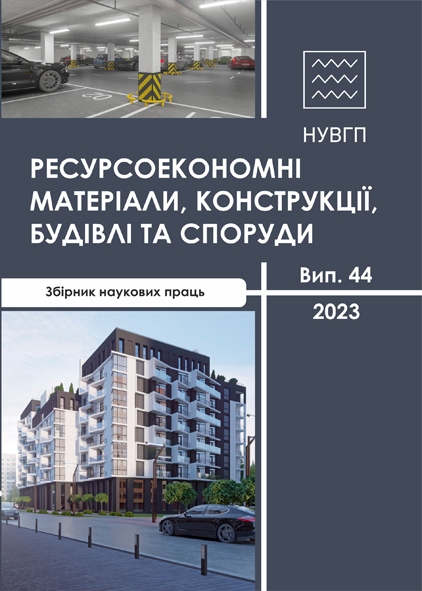INFLUENCE OF GRAIN COMPOSITION SAND ON THE STRENGTH OF NON-AUTOCLAVED FOAM CONCRETE
DOI:
https://doi.org/10.31713/budres.v0i44.12Abstract
The use of concrete with porous aggregates and non-autoclaved foam concrete gives structures specific properties and determines the rational areas of their application. This leads to a reduction in the weight of such structures, thereby reducing the load on the foundations of buildings or structures. On the other hand, the use of porous artificial aggregates contributes to solving environmental problems. Every day, a significant amount of waste accumulates in the country, requiring huge areas for storage. Recycling even a portion of this waste to produce porous aggregate has a positive impact on environmental protection and reduces the area occupied by waste storage. Finally, the use of lightweight or cellular concrete in building envelopes can reduce heat loss in heated buildings by 20...50%, which means energy savings of 10...25% for heating the entire building.
The economic advantages of structures made of lightweight or cellular concrete are also determined by its specific properties, which do not directly affect its cost, but are taken into account when choosing the field of application. These properties include higher fire and frost resistance, and better thermal insulation properties. In general, the economic feasibility of developing the production and use of lightweight concrete structures in construction is assessed by several indicators: reducing the weight and metal consumption of buildings and structures, reducing transportation costs, etc. However, the main complex indicator is the reduced costs, which are initially influenced by the cost of fine aggregates, the availability of a raw material base for their production and construction industry enterprises, the types and nature of the structures, as well as the type and volume of construction.
Significant economic advantages can be obtained when using small aggregates with a changed grain composition in foam concrete elements. When using the same starting materials, by changing the grain composition of the fine aggregate, it is possible to obtain better strength characteristics of the foam concrete itself, which is important in the manufacture of span structures, and therefore it is possible to save on cement and reinforcement in the range of 5...10% of cement and about 5% of reinforcement.

